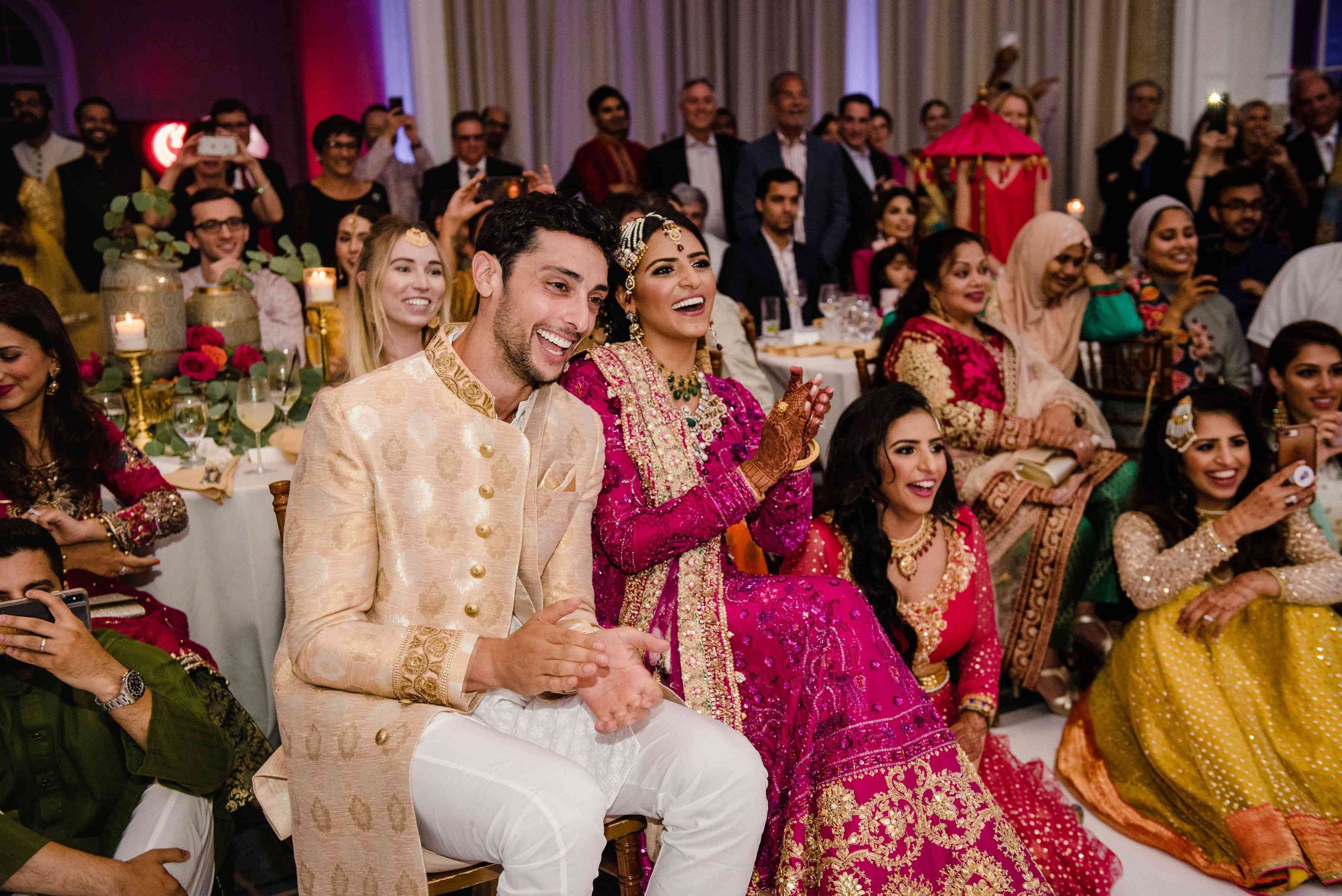Indian Wedding Planning (101)
After backpacking for a month in India in 2010 I was fortunate to find myself in the vicinity of three different Indian Weddings taking plane. All who had love in their hearts were invited to attend, and luckily for me - I do! As a witness to the festivities, I was anxious to bring learnings home and make myself available for Indian Weddings here at home :).
Here are a few things I’ve learned:
1. No Indian weddings is exactly the same. It's important to know the type of Indian family—North Indian? South Indian? Punjabi?—and recognize that the cultural nuances are addressed individually.
2. Indian weddings invite everyone. That's why these weddings are huge! There's additional pressure in the South Asian community to avoid offending anyone by not offering them an invitation, and on the flip side, most of those invited feel obligated to attend out of respect.
3. Color is key!Typically, the only color that Indian culture doesn’t wear is white or black. YEAH!! Red is considered auspicious and is a prominent color at Indian weddings—usually with gold accents. Think saris, flowers, decorations, invitations, and sometimes even a little bit of red dye in the bride’s hair two or three days before the wedding.
4. For Indian weddings, the bride and bridesmaids wear saris or lengha; the groom and groomsmen wear a sherwani, which is a long top and pants, and the groom usually dons a turban. Often the bride and groom will wear a different outfit for every single event. The groom gets to do as many outfit changes as the bride, which is pretty cool. Each attendee's sari or lengha (the skirt version) feels as radiantly splendid as the last with bright colors and gorgeous embellishments.
Men guests should wear long sleeves and long pants. Both men and women guests need to bring something to cover their heads during the ceremony.
5. A typical Indian wedding timeline stretches about three days. The Hindu wedding ceremony, takes place on the third day, usually lasts between one-and-a-half to two hours and is followed by the reception. The whole day clocks around 16 hours. The two days prior are for more intimate events (such as the tilak ceremony, the haldi (or pithi) ceremony, the mehndi party, and the sangeet) that are only attended by close friends and family members.
6. “No box gifts" is commonly found at the bottom of Indian wedding invitations. If a couple does want one, is usually money and the amount should end in a one. Culture dictates that the best of things end in one; so instead of a gift of $100, you'd do $101.
7. The Ceremony:
The groom gets his own processional, or bharaat, and usually rides up with a fancy car, a horse, or an elephant. He then makes his way to the mandap, a dome-like covering that resembles a Jewish Chuppa, to greet the families. The parents and the groom remove their shoes and enter the sacred space where a fire (agni) is burning to symbolize the highest degree of a witness. The prayer to Ganesh under the mandap asks for the Hindu deity to bestow good luck and remove obstacles for the couple and their families.
The bridesmaids, flower girl, and ring bearer (if the couple has decided to exchange rings) all journey down the aisle while the bride prepares for her grand reveal, or kanya aagaman. During the processional, she will often be escorted by her uncle(s) or oldest male relative and sometimes is literally carried before being given away, during the kanya daan.
The particulars vary per culture, but the jai mala is the bride and groom's exchanging of flower garlands. The groom also gifts the bride a mangal sutra necklace. For the hasta melap, a knot is tied between the groom's scarf and the bride's sari by a female relative of the groom. The couple joins hands, and their physical binding represents "a love that binds two souls for a lifetime." During the mangal phera, the couple clasps hands again and takes four steps around the fire, each step representing a stage of life: To pursue life’s religious and moral duty (dharma); to pursue prosperity (artha); to pursue earthly pleasures (kama); to pursue spiritual salvation (moksha).
The couple will take seven more steps for the saptapadi. "These represent the first seven steps you take together as husband and wife," explains Shah. Someone from the wedding party, typically the groom's brother, will spread out seven stones in a straight line, and the couple will move from stone to stone, touching each with their toes, as the pandit reads the seven verses. They roughly translate to: "Together we will live with respect for one another. Together we will develop mental, physical, and spiritual balance. Together we will prosper, acquire wealth, and share our accomplishments. Together we will acquire happiness, harmony, and knowledge through mutual love. Together we will raise strong, virtuous children. Together we will be faithful to one another and exercise self-restraint and longevity. Together we will remain lifelong partners and achieve salvation." Finally, the newlyweds recess back down the aisle, conventionally sprinkled with red rose petals.
8. Traditionally, there is no kiss at the end of a Hindu wedding ceremony as it is considered too personal for such a public setting. However, this can vary based on the couples and their families. Most Indian people don’t show a lot of affection during the wedding weekend out of respect for elders who might get offended.
9. Everyone invited to the wedding is usually invited to the reception, and the Reception is a BIG PARTY! Receptions normally start close to seven and go until around midnight and there is typically a LOT OF FOOD, typically regional and non-regional options. Oftentimes there's an elevated theatrical aspect to an Indian reception. Wedding party members or guests may serenade the newlyweds with Bollywood-style dances. Sometimes the couple will show off a performative dance themselves, before everyone joins them on the dance floor. The bhangra, usually set to Punjabi-type music, is the most popular type of dance. Keep your eyes on the bridesmaids and the bride’s side of the family during the reception, and you might see some pranks on the groom, like stealing the groom’s shoes, and demanding money to get them back as an example. Everything is about money, so another example is for the guests to stop the bride and groom from leaving the ceremony until they are paid. At the end, typically there is a farewell for the bride and groom, who venture off in a fancy car or something comparable.
10. Pre Wedding Events & Ceremony Traditions:
The mangni, as it is called in northern India, or nischitartham, as it's referred to in southern India, is the closest equivalent to a Western engagement party. This event is often large and celebratory with all of the two partners' families present. At this party, several rituals are performed, a formal commitment is made between the two people getting engaged, and vows are exchanged to solidify the engagement. As an example, after the groom's father gets permission from the bride's father to proceed with the wedding—the wagdaan ritual may be performed so that the couple becomes formally engaged. The wagdaan ceremony is when the groom’s family welcomes the bride's family into their home. explains Patel. The ritual is performed differently within each family but most often includes an exchange of vows and a commitment with a ring to signify the engagement.
The to-be-weds also participate in lagna patrika, which is when the bride and groom exchange a written vow to one another that the wedding will take place at a later date and time. Typically, the date and time proposed during this ceremony will be the one printed on the invitations. Often, a pandit (Hindu priest) will be present to write down the details of the marriage, including the names of the engaged, their family members, and the proposed date and time of the wedding, with a red pen. Together, the wagdaan and lagna patrika are considered a formal announcement of the wedding, which will typically take place months later.
Most auspicious Hindu ceremonies involve a puja, which is a prayer ritual performed in praise of deities. Both families are present and there is usually an exchange of various items and gifts, such as outfits and accessories. There are numerous pujas completed, and each has its own meaning and purpose. Typically, they serve to bless the upcoming wedding and marriage. After the pujas, the couple is officially pronounced bride and groom, though they will not be married until several days later.
A mehndi ceremony is traditionally reserved for the bride-to-be and her closest friends and family members and involves the application of a bridal henna design, to her hands and feet. Henna is a brown paste that temporarily dyes the skin and is applied in intricate designs. The ceremony usually takes place the day before the wedding, as the henna application can take a while and requires the bride to remain seated for hours while it dries. Traditionally, the designs have an ornamental floral theme, but contemporary brides-to-be opt for personal touches or even hide the groom's name within the design and have him try to find it. A modern addition to this tradition is to customize the henna designs with something personal that means something to the couple. Some believe that the darker the color of the dried design or the longer that it lasts on the skin before fading signifies how deep the groom's love is or how fondly the mother-in-law will treat her son's spouse.
The tilak ceremony is considered the groom's counterpart to the mehndi ceremony. This ceremony is only for the groom-to-be and family members or close friends and involves the bride's father and groom's father exchange gifts, such as sugar, coconuts, rice, clothes, jewelry, and henna. The groom-to-be is offered tilak, a paste painted onto the forehead, to ensure he will be a loving husband and father. The exchanging of gifts and the application of tilak at this ceremony are meant to symbolize the bride's father's acceptance of the groom into his family.
Traditionally, the sangeet or garba takes place after the mehndi ceremony. The sangeet, which means "sung together," is a pre-wedding party where family comes together to sing, dance, and celebrate the wedding festivities to come. It usually takes place at the bride's home or at a separate venue, depending on how many guests there are. It is typical for family members to break out a musical performance where the bride's family performs for the groom's family to welcome them.




